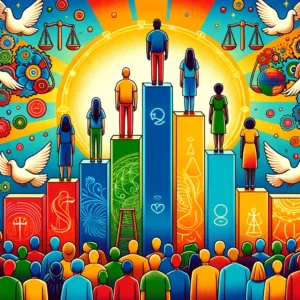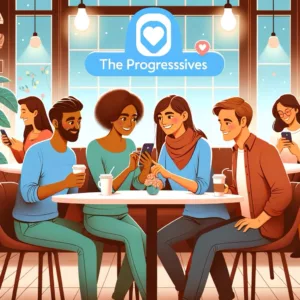Love is a universal language that knows no boundaries, yet the way it is expressed and experienced can vary significantly from one culture to another. Dating customs, traditions, and norms differ around the world, shaping how people pursue and maintain relationships. Exploring these cultural dating differences can offer valuable insights into the diverse ways love is perceived, celebrated, and navigated across the globe. This blog post delves into some of the intriguing cultural dating practices from various regions, highlighting how these differences can impact relationships.
- Dating Traditions in Western Cultures:
In many Western cultures, dating often revolves around individual autonomy and freedom of choice. Here, dating typically begins in the teenage years, with young people seeking romantic partners based on personal preferences and mutual interests. The concept of “dating around” is common, as individuals may explore multiple relationships before committing to a more serious partnership. Expressing affection through physical touch and public displays of affection (PDA) is widely accepted in Western dating, reflecting a more liberal attitude towards romance.
- Traditional Courtship in Eastern Cultures:
In contrast, Eastern cultures often place a stronger emphasis on family and community involvement in the dating process. Traditional courtship practices, like arranged marriages, are still prevalent in several Eastern societies. These arranged unions are often guided by the family’s input and aim to strengthen social and economic ties between families. While arranged marriages may appear rigid to some, they are seen as a way to prioritize long-term compatibility and stability over fleeting romantic feelings.
- Dating and Religion:
Religion plays a crucial role in shaping dating customs worldwide. In some religiously conservative societies, premarital relationships may be discouraged or even forbidden. Dating might be restricted to group outings, chaperoned meetings, or under the watchful eye of family members. Conversely, in more secular societies, religion may have a lesser impact on dating, allowing individuals greater freedom to choose their partners based on personal compatibility and attraction.
- Gender Roles and Dating:
The perception of gender roles greatly influences dating dynamics. In some cultures, traditional gender roles remain deeply ingrained, with men being expected to take the lead in pursuing women. In contrast, other cultures promote egalitarian relationships, where both partners share responsibilities and make decisions together. Understanding and respecting these differing gender norms is crucial in fostering successful cross-cultural relationships.
- Communication Styles:
The way people communicate their feelings and emotions varies across cultures. Some cultures encourage direct and explicit communication, valuing openness and honesty in relationships. Others may favor more indirect communication styles, relying on nonverbal cues and subtle gestures to express emotions. These differences in communication can lead to misunderstandings or misinterpretations, emphasizing the importance of effective communication and cultural sensitivity in international dating.
- Dating and Social Etiquette:
Social etiquette plays a vital role in dating, dictating appropriate behaviors and manners. What might be considered charming in one culture could be seen as rude or offensive in another. Understanding and adapting to these cultural nuances is vital in building strong relationships, as it shows respect for one’s partner and their cultural background.
- Navigating Long-Distance Relationships:
With globalization and the prevalence of online dating, long-distance relationships have become more common. While these relationships can be challenging, they can also provide an opportunity to learn about and embrace another culture intimately. Successful long-distance relationships require trust, effective communication, and a willingness to understand and adapt to each other’s cultural practices.
Conclusion:
Exploring cultural dating differences opens a window into the rich tapestry of human relationships and how they are influenced by cultural contexts. As the world becomes increasingly interconnected, cross-cultural dating becomes more common, making it essential to embrace and respect diverse dating customs. By learning about and understanding these cultural nuances, individuals can navigate international relationships with empathy, openness, and an appreciation for the beauty of love in all its forms. Remember, at the core of any successful relationship lies the willingness to understand, embrace, and celebrate each other’s uniqueness, transcending borders and fostering a truly global understanding of love.
Don’t forget to follow Lefty on our social media:


















